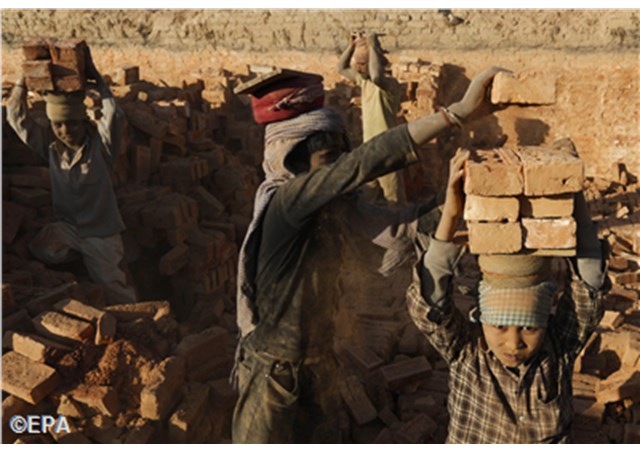
Nepal's tragic phenomenon of trafficking Women and children

In the last year and a half about 13,000 women and children from Nepal have been
victims of trafficking to other countries. Their number has increased by 60 percent
compared to the previous year. The data was provided by a report of the National Commission
for Human Rights in Nepal (NHRC), published in the capital Kathmandu on the occasion
of the XIX General Assembly of the Asia-Pacific Forum. According to the NHRC, the
majority of women have been victims of trafficking for forced prostitution, and children
are forced to beg or forced labor and, in some cases, even used for organ transplants.
The 2013 edition of the Global Slavery Index (Global Report on slavery) drawn from the homonymous humanitarian organization has ranked Nepal in the fifth place out of 162 countries around the world, to the modern practice of slavery.
Human trafficking in Nepal is a serious concern. Nepal is mainly a source country for men, women and children subjected to forced labor and sex trafficking. The Trafficking in Persons Report (TIP) compiled by the US State Department rates Nepal as Tier 2, the explanation of which is “the government does not fully comply with the minimum standards for the elimination of trafficking; however, it is making significant efforts to do so.”
Approximately 50,000 women and girls work in restaurants, dance bars and massage parlors in Kathmandu and about one third of them are exploited sexually. The bars and restaurants are almost exclusively used by men, and till now, the female workers have been pressured by the owners to be available for whatever the customer wants. But the women and girls still hope to turn these into regular jobs where they are safe, properly paid and treated with respect.
Most girls who are trafficked are from very poor families from villages where they or their families are lured by false marriages, or the promises of employment or education.
Gang-rapes and beatings are common practice and more abuse is carried out when they are imprisoned in cages. Torture is used as a strategy to ensure their future compliance. Most of these innocent girls are forced to have sex with as many as 40 clients a day.
Any sign of protest or attempt to escape brings them more torture and beating.
After several years, many of these girls catch diseases, including AIDS. Although the data produced by NGOs and researchers is fluctuating, UNICEF reports that as many as 7,000 women and girls are trafficked out of Nepal to India every year, and around 200,000 are now working in Indian brothels.
| All the contents on this site are copyrighted ©. |


